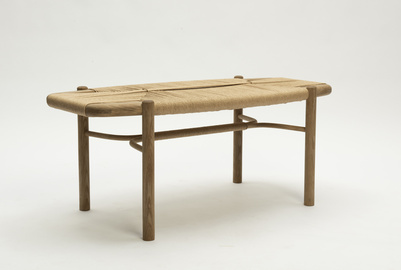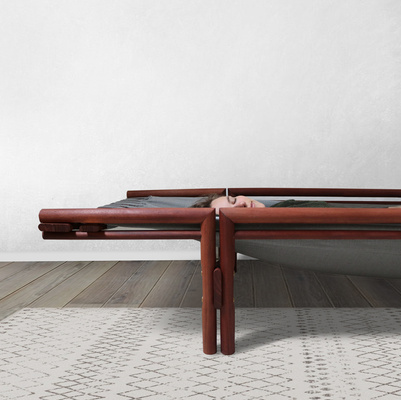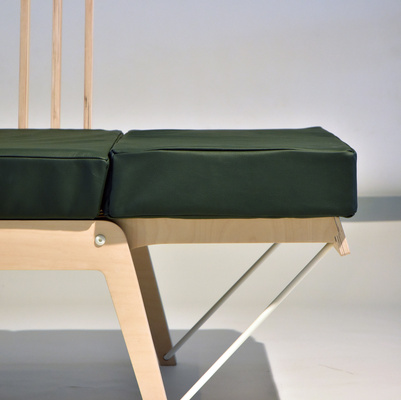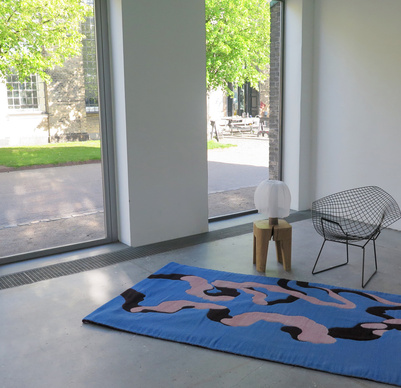Parametric Bench
This project seeks to add a shape language, or rather principle, which speaks to organically shaped architecture, of which we are seeing in increasing amounts these years. In Copenhagen, that's buildings such as the Silos at Islands Brygge and Axel Towers.

By employing a parametric approach in the design (the Grasshopper plugin for Rhino and physically manipulative models), thus programming rather than drawing the furniture, it's possible to generate pieces with the same expression, but customized to be site specific.
The bench is made up of "cells", and the parametric model consumes an input curve - presumably the curvature of the adjacent wall. The variables include cell depth, length, height, type and size of legs and material thickness, all of which can easily be adjusted from a control panel and exported into common CAD formats.

Bending solid strips of wood eliminates the need for the toxic Urea Formaldehyde, which is used in laminating veneers, but also places a constraint on the amount of curvature to the wood. Hence the cellular division of the couch and usage of only a very limited amount of the non-toxic PVA glue for the end joints and the fixing of the base sheets.


This prototype has been customized to one of the Axel Towers and outfitted with smoked oak to match the texture of the oak interiors, while keeping in line with the building's color semiotics where darker=load bearing, midtone=functional and lighter=decorative. The wooden framework of the bench is thus dark, and the textiles is midtone, close to the color of tarnished copper, which the facade won't get for ages, due to the high Zinc content of the Tombac alloy.
Context render


Gallery: photos of prototype from exhibition (studio snaps on the way)




The textiles have been gracefully sponsored by






